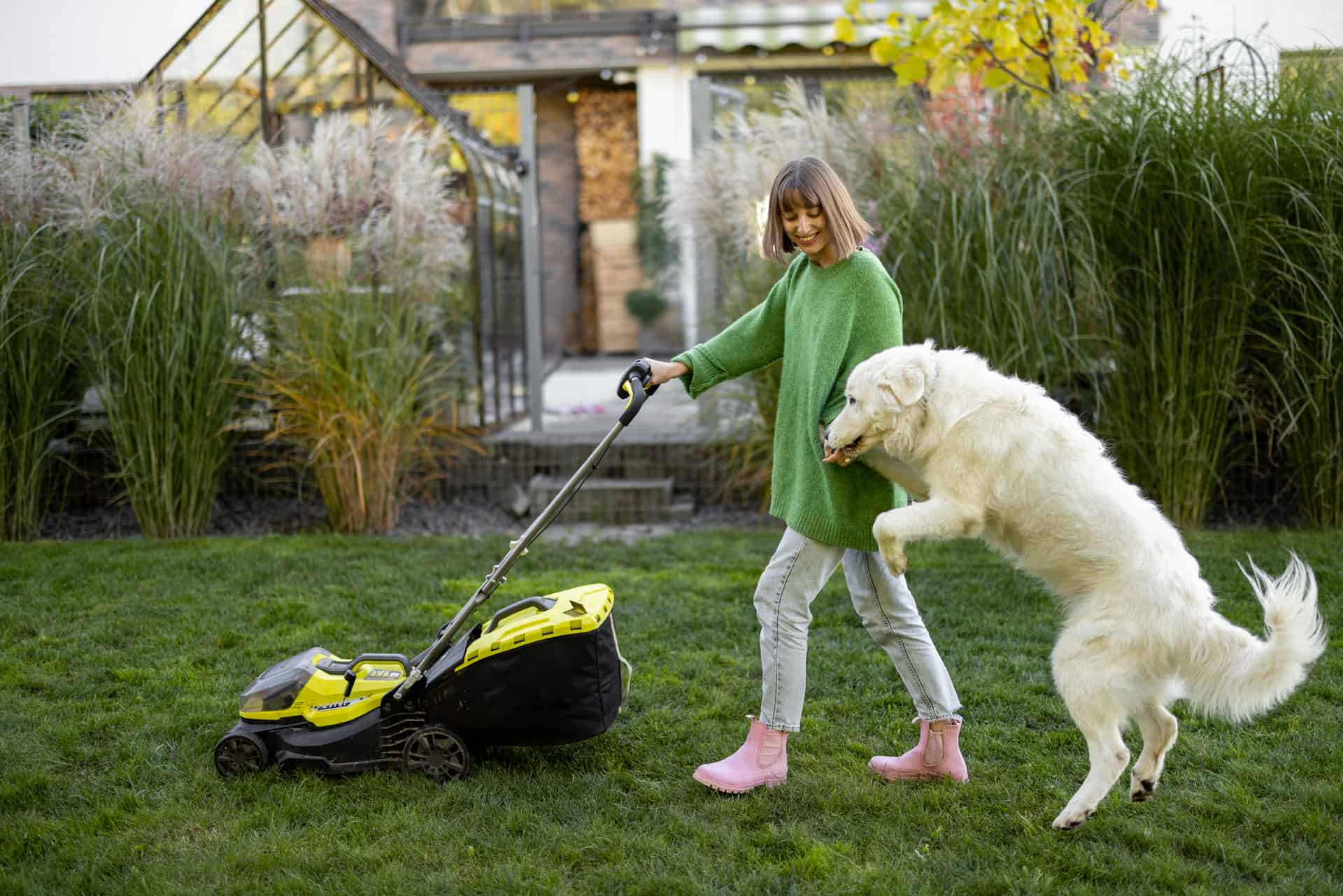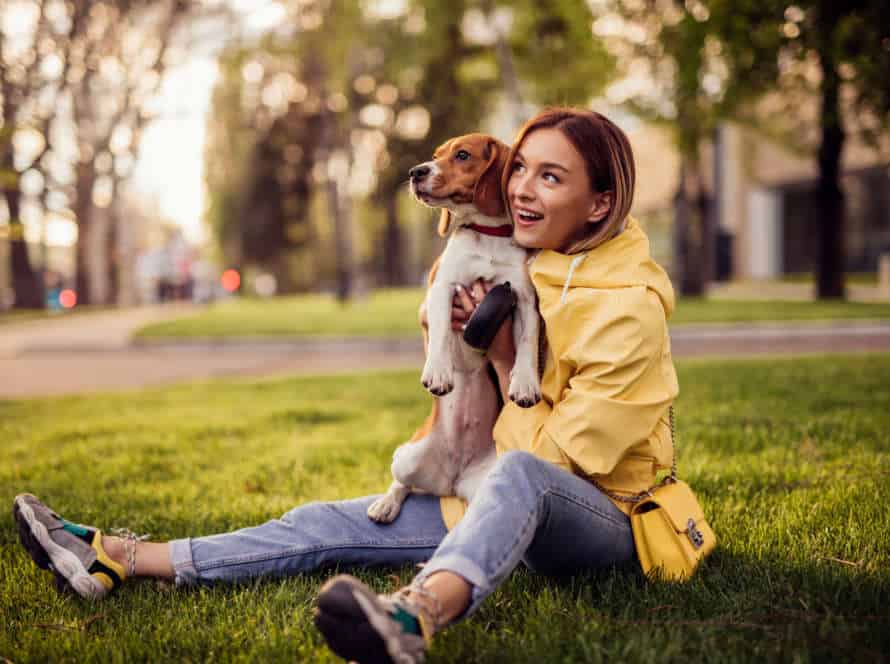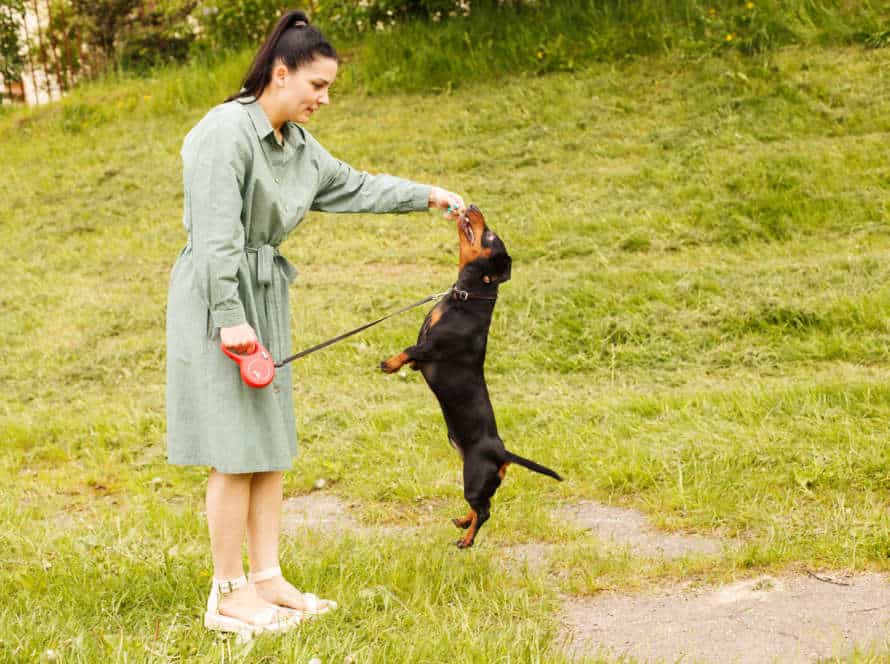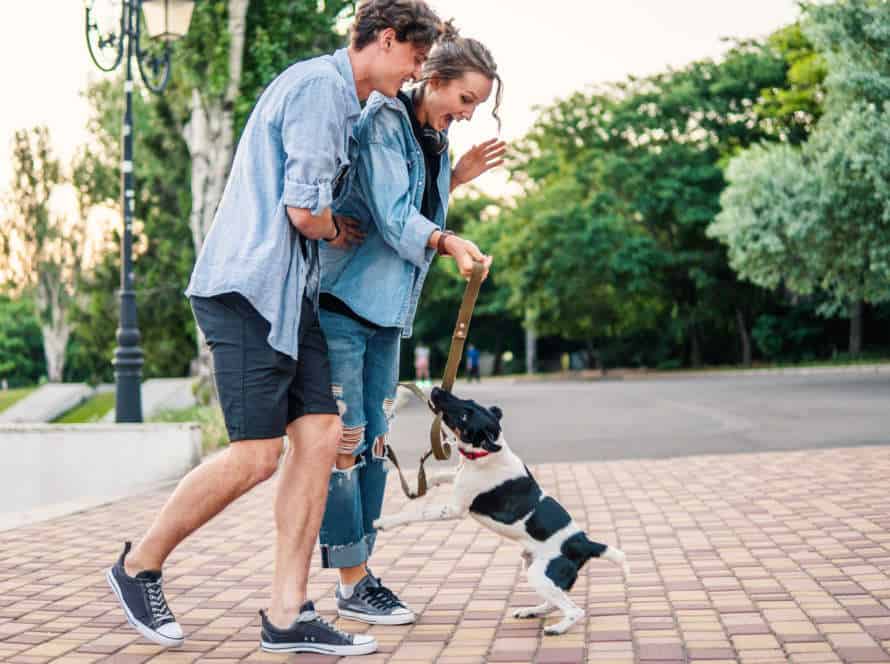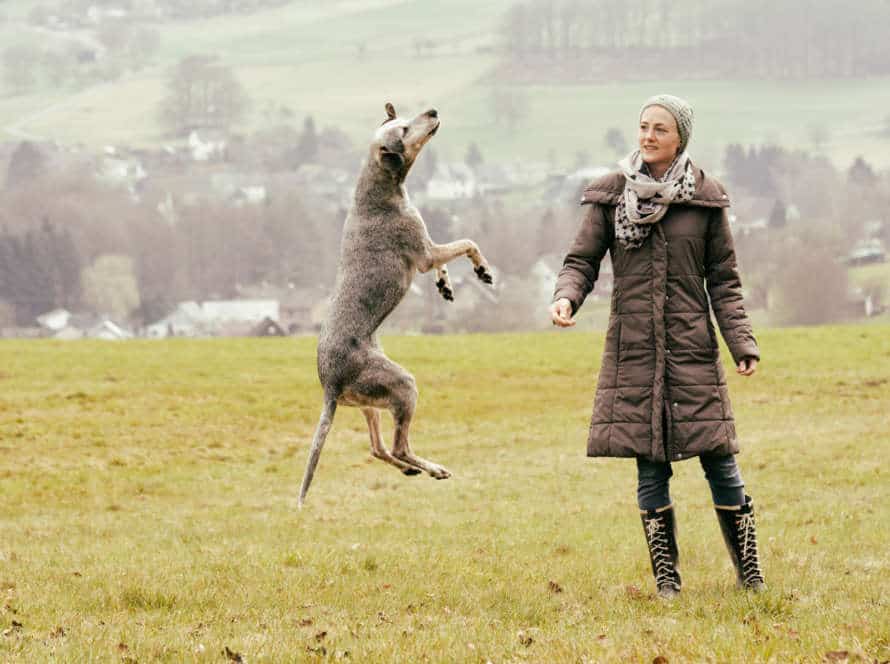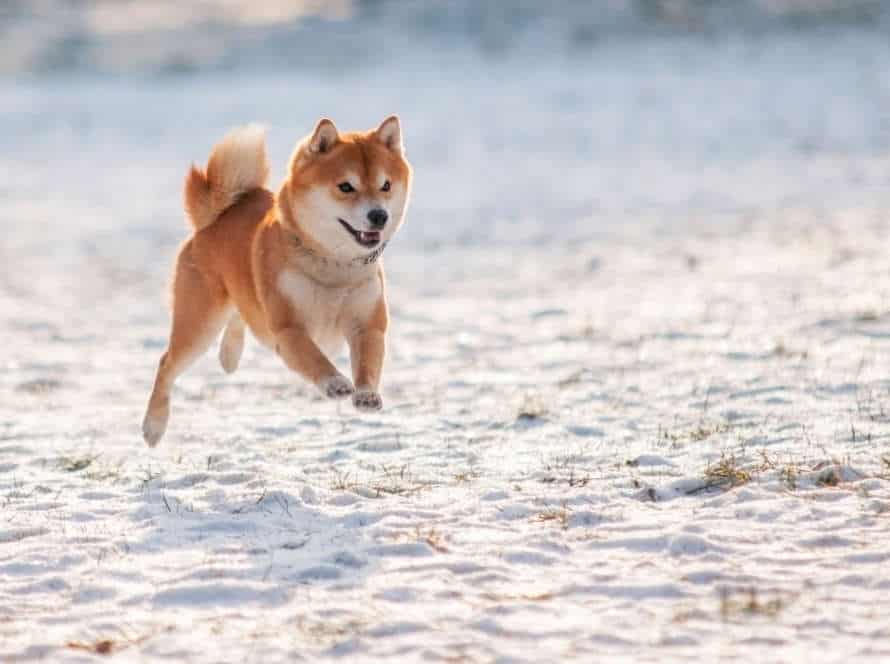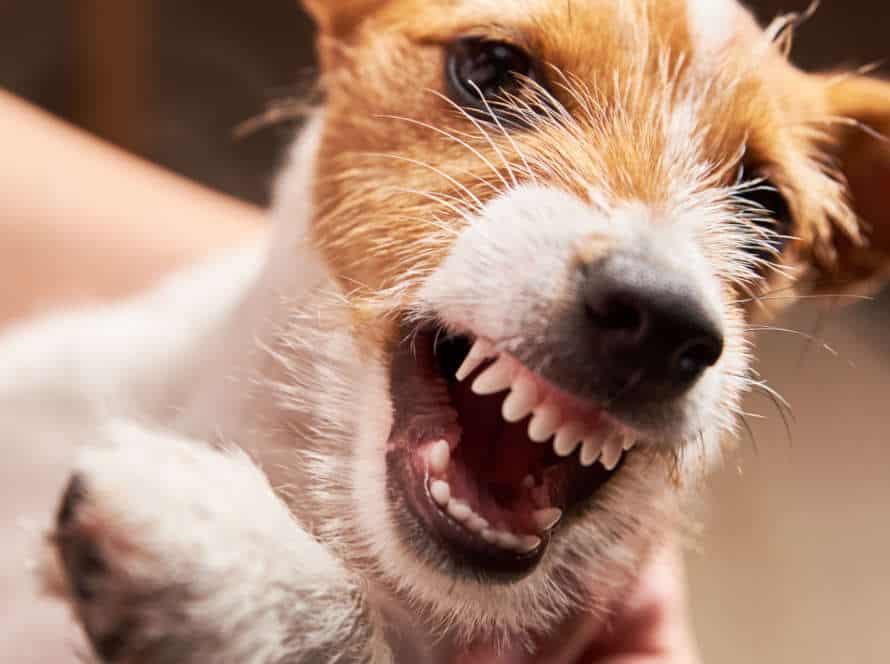The Instinct to Jump
Dogs have a natural jumping instinct. It comes from their wolf ancestors. Young pups do this to try and be higher in the pack. Yet, jumping can be a problem when dogs jump on people. Let’s learn about why this happens.
Evolution of Canine Behavior
Jumping is an ancient doggy behavior. Initially, it was a practical way for them to access food, shelter, and other resources. Later, it became a social behavior for dogs to meet humans and other dogs.
Here’s why dogs jump on people:
They use body language and physical contact to communicate. Jumping helps them make eye contact with humans and sniff/lick their faces. It also expresses excitement and affection.
Jumping also can mean anxiety, fear, or dominance. This can be a problem if it hurts or bothers humans/animals.
The key to managing this behavior is to show your dog different ways to greet people. Sit or stay are two options. Consistent training and positive reinforcement teach them good manners and decrease jumping.
Pro Tip: Teaching your pup to sit and wait for attention can help them stop jumping and make bonding easier.
Pack Hierarchy and Jumping
Jumping is a natural instinct for dogs – driven by their pack hierarchy and communication needs. When dogs meet, they often jump up to show dominance or submission. They jump on humans to show their emotions and assert their position.
3 common reasons why dogs jump on people:
- Excitement – Happy, excited, want to play.
- Anxiety – Nervous or stressed, seeking physical contact for reassurance.
- Hierarchy – Assert position in the pack, seeking attention or submission.
Train your pup not to jump? Ignore them till calm, reward calmness, provide an alternative greeting behavior. Pro-tip – Use positive reinforcement & consistency when training your dog.
The Role of Puppyhood in Jumping Behavior
Jumping is a normal behavior for pups. It is an instinct that helps them explore, interact with other dogs and people, and express excitement. But, if not addressed, jumping may become a problem, especially when it comes to humans.
During puppyhood, dogs are learning how to interact with people. Jumping on people is a behavior that gets attention from humans, which reinforces it.
To address jumping, puppies need training and socialization. Teach them alternative behaviors, like sitting or shaking hands, to get attention. Positive reinforcement and consistency will help them learn what is expected and how to interact with people properly.
Why Dogs Jump on People
It can be tedious, yet always intriguing to comprehend the science behind why dogs jump on people. Studies have revealed that this action is an outward manifestation of an inward emotional yearning. To learn further, let’s research the science behind why dogs jump on people.
Seeking Attention or Affection
Dogs jumping on people happens often. It’s to get either attention or love. Here are a few reasons why they do it:
- Attention: They want to play or show excitement.
- Affection: It’s a way to express joy and love.
- Natural: Jumping is natural for young dogs, exploring the world.
To stop this behavior, owners can train their dogs with commands. Then reward them for good behavior, and ignore or discourage the jumping.
Displaying Submission or Excitement
To comprehend why dogs jump on people, you must understand their natural tendencies, socialization, and communication. They use jumping to greet, show love, yield, or be thrilled. For pups, it is a method to acquire attention and form bonds with us humans. For adult dogs, jumping can be a sign of yielding or dominance.
It’s vital to educate your dog not to jump on people. This is even more significant if it could cause damages, fear, or worry in others. Training strategies may include teaching your pet to sit or remain when meeting someone, rewarding them for good behavior, and diverting their energy to a certain activity. Comprehending the main reasons why dogs jump on people can assist you to adjust their actions and construct a positive and safe relationship with your furry companion.
Establishing Dominance or Control
Dogs jump to show dominance. But why? Research suggests they may have learnt it to get attention. This reinforces the behavior and makes it a habit. It’s also a way to show physical dominance.
Training your dog to stop jumping needs consistency and patience. Try positive reinforcement like rewarding for good behavior.
Tip: Ask your dog to sit when people come over. This replaces jumping and still gets attention.
The Impact of Positive Reinforcement
Dogs jump on people – a common sight. It’s because of positive reinforcement. The reward they get? Affection from the person. It can be in the form of voice, petting, treats or even eye contact.
In this piece, we explore why dogs learn this behaviour and how positive reinforcement affects it.
Understanding Positive Reinforcement Training
Positive reinforcement training is a way to modify behavior by giving positive outcomes like treats or praise. It works really well for dogs who jump on people.
Jumping could be because of excitement, attention or dominance. But using positive reinforcement will reduce it.
Here’s how:
- Reward the dog when it behaves correctly, not when it jumps.
- Only give treats when all four paws are on the ground.
- Ignore the jumping and pay attention when it stops.
This type of training can help your pet understand what’s rewarded and what’s not. Professional help from a trainer is always a good idea.
Using Rewards to Modify Jumping Behavior
Using rewards to modify jumping behavior in dogs is an efficient and positive reinforcement technique. Positive reinforcement means adding something pleasant to promote certain behavior, like stopping your dog from jumping on people.
The science behind why dogs jump is complex, but it’s usually because of excitement, anxiety or a learned habit. Here’s what to do: Teach your dog another behavior like sitting or lying down when it’s excited. Reward this alternative behavior with treats, compliments or toys so it’s more likely to do it again. Be steady with the rewards and gradually lessen the amount and frequency of them as your dog gets better at the desired behavior.
Pro Tip: Be patient and consistent when training your pup to make lasting changes to their behavior. Remember that jumping is normal for dogs and it takes time and effort to change it.
Potential Risks of Negative Reinforcement Training
Negative reinforcement training can be effective for dog behavior modification. However, there are risks. These include:
- Fear and anxiety for the dog. Shock collars or physical punishments can create long-term behavioral and emotional problems.
- Aggression towards owners or others. Especially with larger breeds, this can be dangerous.
- Lack of trust between dog and owner. Negative reinforcement makes the dog fear and distrust their owners, which can break the bond.
Positive reinforcement is better. Rewarding good behavior with treats or praise builds trust and strengthens the bond.
Pro Tip: Always use positive reinforcement training for a happy, healthy relationship with your pup!
Effective Strategies for Preventing Jumping
Pup’s jumping can be mortifying! To stop it, we must comprehend why dogs jump. Let’s delve deeper and check out the science behind the behavior. Then, we can utilize successful techniques to put an end to the jumping!
Teaching Alternative Behaviors
Teach alternative behaviours to dogs to stop jumping, and direct their energy to more acceptable and positive actions. Ignore the jumping and reward calm behaviour. Teach basic obedience commands like “sit,” “stay,” and “down” to refocus the dog’s attention and energy.
Positive reinforcement like treats, praise and playtime, reinforces the desired behaviour. Give your pup appropriate toys and chew items to keep them occupied.
Be aware of the science behind jumping. Dogs jump on people for various reasons, like seeking attention or being excited. By understanding why the dog jumps, you can better train them to do alternative behaviours.
Adding Structure and Consistency to Daily Routine
Building Structure and Consistency
Building structure and consistency into your day-to-day can help boost productivity, focus, and overall well-being. Here are some strategies for implementing structure and consistency:
- Make a plan: Outline daily tasks and routines and stick to them as much as possible.
- Prioritize self-care: Set aside time for exercise, reflection, and rest to maintain a healthy work-life balance.
- Minimize distractions: Turn off notifications and avoid multi-tasking during work hours to reduce interruptions.
- Set boundaries: Establish healthy boundaries between work and personal life to lower stress and stay focused.
Preventing Jumping in Dogs
Jumping is a common problem behavior in dogs which can be managed with positive training. The science suggests that dogs may jump on people as a way of saying hello or seeking attention. To prevent jumping, it’s important to:
- Train your dog to sit and stay: Reinforce good behavior with treats and praise when your dog responds correctly.
- Don’t reward jumping: Don’t give your dog attention or praise when they jump, as this reinforces the behavior.
- Use a leash or barrier: Use a leash or baby gate to stop your dog from jumping up when greeting people.
Consistency and patience are key when tackling jumping in dogs. By reinforcing positive behaviors and not rewarding jumping, you can help your dog learn better ways to greet people.
Using Deterrents and Avoiding Triggers
Dogs naturally jump, but it can be a struggle for pet owners. To prevent jumping, use deterrents and avoid triggers. Here are some tips:
- Train your pup with positive reinforcement. Give treats or praise when they act well.
- No physical punishment, as it leads to aggression.
- Use deterrents like high-pitched noises, pet-safe sprays, or motion-activated alarms.
- Keep away from triggers like excited behavior or physical contact.
- Be consistent with training and reward your pup for good behavior. With time, your dog will learn to say hello without jumping.
Working with Professional Trainers
Jumping can be hard to alter. If it’s tricky, think about employing a pro trainer. They can give you strategies and tools to modify your dog’s conduct. Plus, they can provide scientific insight as to why your pup is jumping. This piece will explore the pros of working with a pro trainer, as well as the science behind why doggies jump on people.
Identifying Qualified Canine Behavior Professionals
When selecting a canine behavior professional, it’s essential to find one who is qualified. Look for these credentials:
- Certification from a reputed organization like the Certification Council for Professional Dog Trainers (CCPDT).
- Constant education and training in the field of canine behavior and training.
- Positive reinforcement and force-free methods.
- Good communication abilities to create a connection with the dog and the owner.
Dogs jump for various reasons, e.g. seeking attention, enthusiasm, and greeting behavior. Professional trainers can use positive reinforcement and counter-conditioning to change the dog’s behavior and teach them not to jump on people.
Pro Tip: Always do research and ask for referrals when picking a canine behavior professional.
The Benefits of One-On-One Training
One-on-one training offers many perks for both canines and their owners. It’s ideal for those who want to work with professional trainers.
The trainer can customize the plan for each pup’s needs and how they learn. This leads to easier and more effective learning, resulting in a content and well-behaved pup.
Private sessions also let owners take part and learn with their dog. This helps strengthen the bond between them.
Moreover, it provides a safe and controlled environment – especially for dogs with behavioral issues.
When it comes to why dogs jump, it’s often as a display of affection or excitement. But if not corrected, it can be hazardous. With one-on-one training, owners can teach their dogs appropriate ways to greet people.
The advantages of private training make it a smart investment for those looking to have a better bond with their pup and teach them good behavior.
Pro tip: Research to find a pro dog trainer with experience and good reviews.
Techniques Used by Professional Trainers
Pro trainers use different techniques to train dogs to behave. Jumps are instinctive but can be hard to overcome. Here’re some tips to discourage jumps:
- Teach the “Sit” command – it helps focus and control.
- Positive reinforcement – give treats/praise.
- Ignore the jump – attention reinforces it.
- Redirect attention – to another activity.
- Consistency is key – keep routines consistent.
These techniques help dogs understand appropriate social behavior.
Frequently Asked Questions
Q: Why do dogs jump on people?
A: Dogs jump on people as a form of greeting, excitement or seeking attention. As pack animals, they rely on close physical contact to show affection and establish social bonds.
Q: Is jumping a bad behavior?
A: Although jumping is a natural behavior for dogs, it can become a problem when it leads to injury or property damage. Training a dog to greet people calmly and politely is ideal.
Q: Can jumping cause behavioral problems in dogs?
A: If jumping is not addressed and controlled, it can escalate to other behavioral problems such as aggression or anxiety. Dogs need to learn appropriate ways of interacting with people and the environment.
Q: What factors influence the likelihood of dogs jumping?
A: A dog’s breed, temperament, age, size, and socialization influence their tendency to jump on people. Some breeds are more prone to jumping, while others have calmer temperaments.
Q: How can I prevent my dog from jumping on people?
A: Consistent positive reinforcement training, socialization, and exercise can help prevent dogs from jumping on people. Use treats, praise, and commands to train your dog to greet visitors appropriately.
Q: Can jumping be a sign of illness in dogs?
A: Although not typical, jumping can be a sign of illness or pain in dogs, especially if it is a new or aggressive behavior. It is advisable to consult a veterinarian if the dog shows any signs of discomfort or abnormal behavior.

